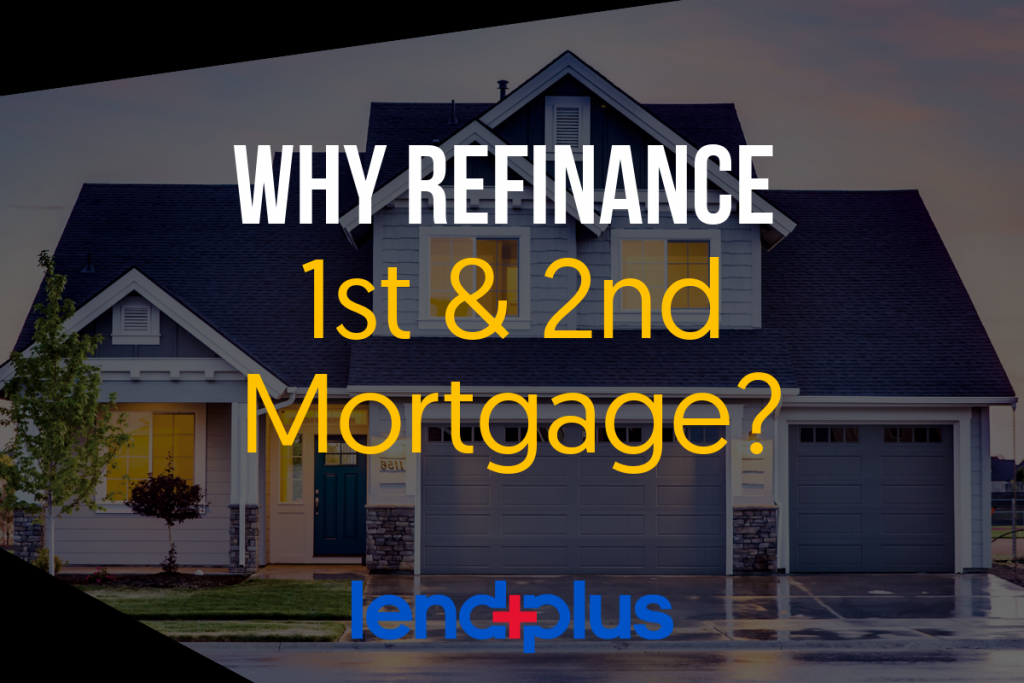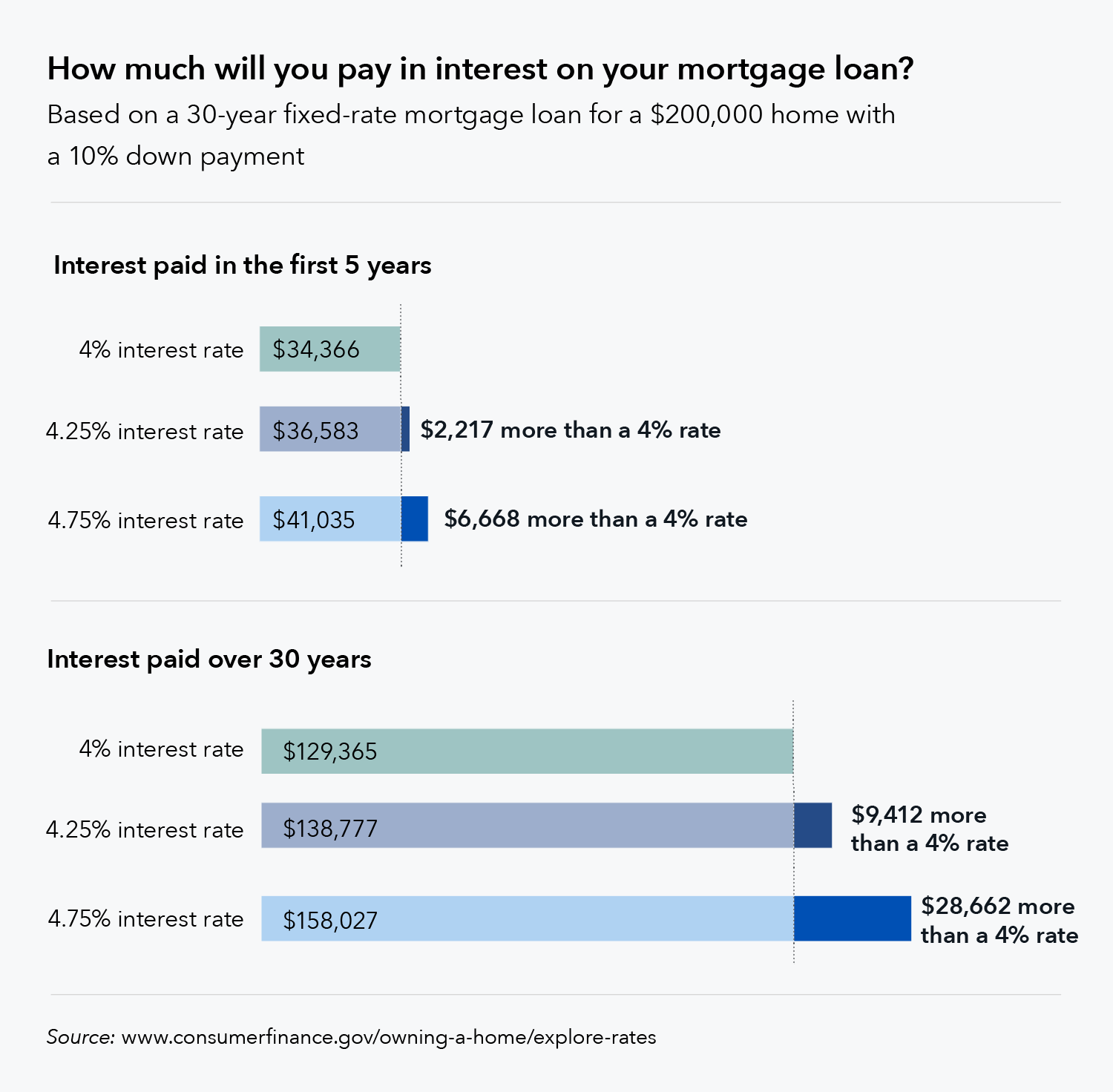After the very first 5 years, we'll state the rate bumps up by just a quarter percent each year. By the in 2015, your payment is up to $990, and you 'd pay $147,962 in interest over the life of the loan. Amount You Pay Above Original Purchase Rate $696$ 990 $307,962 $147,962 With a minimum deposit of simply 3.
75% interest, your regular monthly payment would total $1,031. That includes $894 for principal and interest, plus $137 for MIP monthly. You 'd also pay $3,378 in upfront MIP at closing and $128,774 in interest over the life of the loan. Amount You Pay Above Original Purchase Price $1,031 $374,366 $181,366 Let's state you put no money down on a 30-year home loan at 3.
For this example, we'll assume your VA funding charge is $4,300 and you fund it into your loan due to the fact that you don't have any extra cash on hand. That indicates your regular monthly payment would be $917 and your total interest paid would come to $125,963. Amount You Pay Above Original Purchase Cost $917 $330,263 $130,263 If you put 5% down and finance the rest with a at 3.
5% (or $79/month) for this example. how to reverse mortgages work if your house burns. Your overall interest paid would concern $131,642 by the time your mortgage is done, and your PMI would immediately drop off after a little over 8. 5 years. Amount You Pay Above Original Purchase Price $972 ($ 893 after PMI drops off) $339,779 $139,779 If you put 20% down on a 15-year fixed-rate home loan at 3.
That conserves you anywhere from $85,000 to $107,000 in interest charges alone! Imagine what you might accomplish with that sort of cash in your pocket! Amount You Pay Above Original Purchase Price $1,115 $240,624 $40,624 If we stack these five home loan alternatives versus each other, it's easy to see where the costs build up.

Now that you understand the mathematics, do not get a house with a mortgage that'll squash your financial dreams. To help get the procedure started, get in touch with our pals at. They're a relied on lending institution who really thinks in debt-free homeownership. After that, make certain and link with a who will keep your best interests in mind and concentrate on serving you first in your look for the ideal home.
Homeownership can be both satisfying and a fantastic monetary choice for your future. However as anyone who has actually dipped their toes into the home-buying process understands, the pressure to find and secure the "best" home mortgage loan can feel frustrating, particularly if you're a novice house buyer. During the early phases of the home-buying procedurepossibly while you're looking into communities and schools, shopping around for homes, and pin down the details of your http://sergiowtbh939.almoheet-travel.com/the-4-minute-rule-for-what-is-the-percentage-of-people-who-pay-off-mortgages budgetit would serve you well to do some research study into the types of home mortgages readily available.
All About What Is Today's Interest Rate On Mortgages
As you have actually most likely discovered, there are rather a couple of home mortgage loan types available to debtors. The process of getting a home loan can be complicated, and one of the primary steps for a property buyer is to choose which kind of loan will best serve his/her requirements. Some home loan candidates are first-time homebuyers, looking for to buy a house as a primary home, while others are experienced property property buyers, with experience purchasing homes mostly for financial investment functions in the form of rent income and possession gratitude.
Brace yourself, due to the fact that the procedure certainly requires you harness your best inner comparison shopper. You'll require to think about the ins and outs of each option along with your individual and monetary requirements. To help make the choice a bit much easier, we've compared the benefits and downsides of each mortgage type listed below.
The length of fixed rate loans can vary, however 2 of the most common time frames are 15 and thirty years. A 30-year fixed-rate loan is the most common, though you can save a lot in interest if you go with a 15-year loan. Month-to-month payments on a 15-year loan will be much higher than for a 30-year mortgage, so it's probably wise to commit just if you're positive that it operates in your budgeteven in case of a monetary emergency.
Nevertheless, one downside is that if you secure a loan when rate of interest are high, you're locked into that higher rate for the whole regard to the loanunless you re-finance. If you have a high fixed rate mortgage in a low rate of interest environment, you might have the ability to re-finance your mortgage when rate of interest drop.
Adjustable rate mortgage (ARM) loans have a rate of interest that alters throughout the life of the loan as rate of interest vary. ARMs usually have a preliminary fixed-rate duration of between 5 and 10 years, during which the rates of interest is repaired. ARMs are typically expressed in 2 numbers (like 5/1 or 2/28), although those numbers do not follow one particular formula (they might represent years, months, variety of annual payments, and so on).
After the fixed-rate period of an ARM, the interest rate switches to variable. The variable rate is typically set based upon a benchmark index rate that varies based upon market conditions. During the fixed-rate duration, the interest rate is normally lower than the interest rate on a traditional fixed-rate loan.
An ARM may work best for somebody who plans to settle their mortgage in 5 years or less, or is committed to refinancing prior to the ARM's rate increase. Rate increases in the future could be dramatic, although there are limitations to the yearly and life-of-loan changes, generally leaving adjustable-rate mortgage-holders with much greater month-to-month payments than if they had committed to a fixed-rate home mortgage.
More About How Many Mortgages In One Fannie Mae
A standard loan is a mortgage originated by a bank or personal lending institution, and is not backed or insured by the government. Banks and loan providers typically look at credit rating and debt-to-income ratio, among other factors which will differ by loan provider, in examining standard loan applications. Down payments (up-front cash) are normally required when getting a standard mortgage.
Conventional loans might have stricter requirements than government-backed mortgage, which can make them a little harder to certify for than a government-backed loan. However, some customers might obtain standard loans for a second home or investment property due to the fact that a lot of government-backed home loans can just be utilized to acquire primary houses (how much is mortgage tax in nyc for mortgages over 500000:oo).

Standard fixed-rate home loan generally require a minimum of a 620 FICO credit rating and a deposit between 5% and 20% (newbie homebuyers might have the ability to put down just 3% . If you put less than 20% down, however, personal mortgage insurance is requiredbut you have choices.
Regular monthly PMI needs to stay in location till your loan-to-value ratio reaches 78%. (The loan-to-value ratio is the quantity of the home mortgage how much does wesley financial charge you are making an application for relative to the assessed worth of the home. The more money you put down, the lower your loan-to-value ratio is, and vice-versa.) A variety of home types would receive a traditional mortgage.
Conventional loans tend to have more stringent requirements for credentials Go to this site and might need a higher down payment than government loans. For house purchasers searching for more versatile loaning standards, government-backed loans such as Federal Housing Administration (FHA) loans and Department of Veterans Affairs (VA) loans for veterans can be enticing choices.